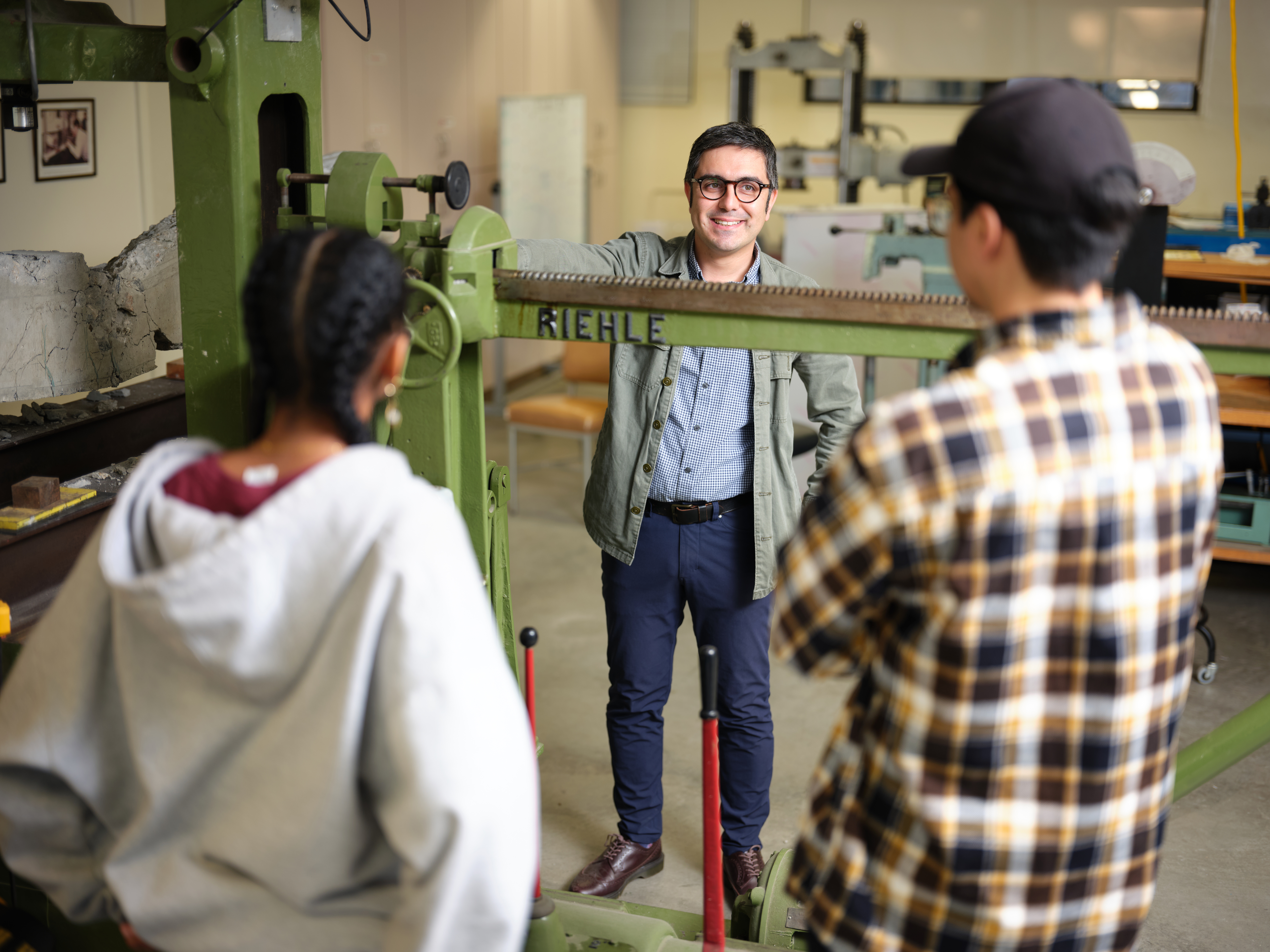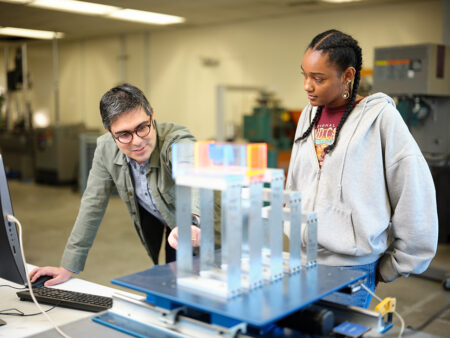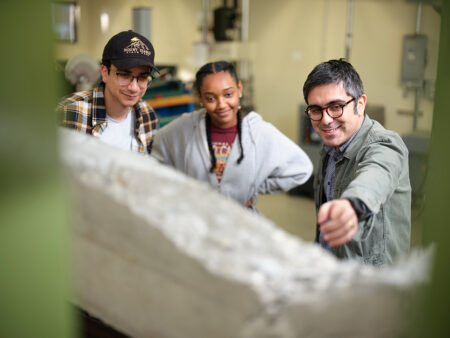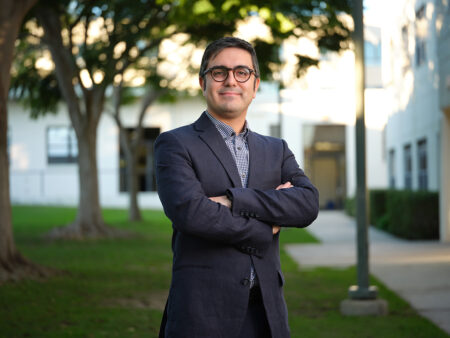
Growing up in Iran, which is located in a high seismic activity region, Mehrdad Aghagholizadeh, assistant professor of structural engineering, developed an interest in earthquakes at a young age and knows firsthand the destruction and casualties seismic activity can cause, especially for developing countries.
“Living in Tehran, I was very aware of earthquakes and I come from a family of civil engineers,” he said. “As a teen in the late 1990s and early 2000s, I have memories of two large-magnitude earthquakes in Turkey and Iran that really affected me as the infrastructure damages and life losses were enormous. After finishing high school, I set my mind to enter a civil engineering program to become a structural engineer.”

Today, his research interests include structural dynamics, performance-based design, structural health monitoring, earthquake engineering, seismic resilience, and historical structures.
Aghagholizadeh is a 2020 recipient of the J. James R. Croes Medal awarded by the American Society of Civil Engineers (ASCE) for a co-authored seismic engineering research paper, Effect of Supplemental Hysteretic and Viscous Damping on Rocking Response of Free-Standing Columns.
Co-authored with his doctorate advisor, the paper investigates seismic response of slender, free-standing columns when equipped with dampers along their sides. In this paper they studied seismic response of the South Rangitikei Rail Bridge in New Zealand.
His post-doctoral, published research conducted at the University of Southern California was commissioned by the Department of Energy’s Nuclear Regulatory Commission and focused on Damage Detection of Spent Nuclear Fuel Canisters using Frequency-Response Functions, and Experimental Modal Analysis and Model Updating of Spent Nuclear Fuel Canisters. He is currently researching on design of articulated structures, and physics-based digital twin of civil infrastructures.

“I joined Loyola Marymount University because I wanted to continue my journey in academia, be a part of an institution that places a high value on scholarly research and teaching, and work in a location known for innovative solutions in earthquake engineering to facilitate my research,” said Aghagholizadeh. “The Frank R. Seaver College of Science and Engineering was interested in having me join the engineering faculty to help expand the offerings within structural engineering, as well as enhance interdisciplinary collaboration opportunities related to engineering and science.”
Currently, he teaches statics, and structural engineering and design. He brings a valued combination of research expertise and real-world application through his experience working as a structural engineer at WSP USA.

“There will be an opportunity for graduate students to conduct research in my lab,” said Aghagholizadeh. “I would like to have students run tests with some of the equipment we have available such as using a shake table to build model structures and we have other facilities to test materials. Some portion of the research will focus purely on structural engineering. I also want to incorporate implementation of machine learning techniques into the research.”
Aghagholizadeh earned his doctorate degree in civil engineering from the University of Central Florida, a master’s degree in civil engineering (structural) at Tarbiat Moallem University, and a bachelor’s degree in civil engineering at Azad University, both in Tehran.



